|
A2BFour's Eva Namusoke writes about her pitch Songs of Namirembe Hill based on the life of Archbishop Janani Luwum for the Talking Humanities blog read it here.
0 Comments
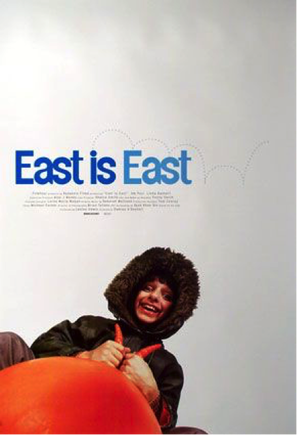 I come from a large family of opinionated individuals. Being exposed to the tastes of older siblings, who refused to take me to see Ghostbusters (1984), because Dune (1984) was considered worthier of viewing, meant that I saw a film I would never ordinarily have watched. In the days when households generally had only one TV and a mere four channels available, this was not the first time that I was nudged beyond my comfort zone as a viewer. My parents and my brothers have influenced my taste in films tremendously; because of my mum I devotedly watched a whole series of Hitchcock films and it was my Dad’s love of westerns that inspired my affection for movies like True Grit (1969). I grew up understanding that if I wanted to see people of colour in the movies, I needed to look for them in the margins to which they were always consigned. I hadn’t watched a film with my brothers for many years by the time I saw East is East (1999). At University in Leeds by this time, I remember its impact clearly and I wished my family and I had had the chance to watch this film together. As the first cinematic depiction of a dual-heritage family that I saw, East is East made a huge impression on me. Yes I see its flaws, the missed opportunities to do greater justice to the story of the mother and father in particular, but I love the movie regardless of these. East is East is the first time I saw a film family I could connect with however remotely and that meant a great deal to me, then and now. Maria @MariaKaladeen 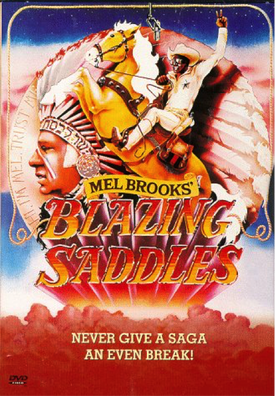 I was shocked to see the black actor Cleavon Little playing Sheriff Bart in Mel Brook’s 1974 western Blazing Saddles. Shocked as I was brought up in the Sixties believing that all cowboys were white, as there were no black cowboys in any of the Hollywood westerns I grew up watching. On the very rare occasions a black character made an appearance it was as very lowly part with clichéd lines and actions of subservience. I now know that at least 25% of the cowboys should have been black or Hispanic, but the westerns I watched told a very different story, a very white story. Not that I took offence at the absence of black faces, that was just the way it was back then, there were no black people in Hollywood’s west. As exemplified by John Wayne’s award-winning string of gun slinging, hard drinking, hard living but ultimately heroic characters. In reality Hollywood’s west was distorted, not true to life at the time. But this was the reality I grew up with so to see in my early twenties a black character playing a leading role was indeed a shock! To this day I still look twice whenever I see a black character in a Hollywood western such as Django! but I’m no longer shocked, we have moved on as Hollywood looks to re-write cowboy history. There many, many other histories distorted by Hollywood involving people of colour which need to be revisited, which is why I want A2BFour - Archive to Blockbuster - to bring diversity to the big screen through addressing the issue of why #OscarSoWhite. Michael @Michael1952  I’ve become accustomed to scan crowd scenes in television programmes and films set in the United Kingdom in historical periods to see whether the production companies have used a diverse set of extras. As a historian of migration, I know that Britain has been racially, ethnically and religiously diverse for centuries, and I would like the screen to reflect this. I get excited when it does. However A2BFour is not a project just about creating racial balance in crowd scenes. It’s about bringing the stories of Black and Minority Ethnic (BAME) characters to the fore, to show that people from a range of social backgrounds were involved in historical events and historical change around the world. My interest in migrants from the Indian subcontinent is reflected in my pitch for A2BFour. The Nightingale of India will follow an Indian woman who studied at Cambridge University in the 1890s and then, as a political activist, visited America, South Africa, Kenya, France and other European countries in the interwar period. She fought for Indian independence and female suffrage, and there are many more stories like hers that show that women of colour can be cast as heroines in historical period dramas to reflect the diversity of the past and the present. Sumita@smukherjee_hist 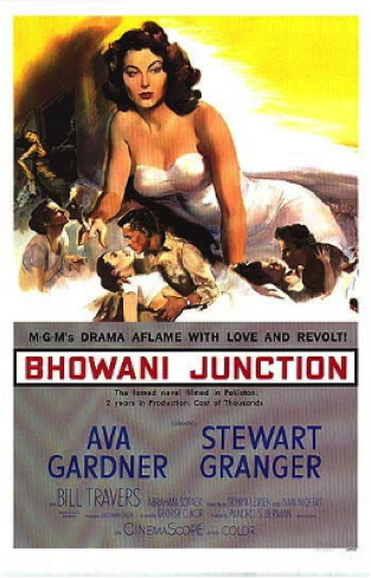 The happiness I feel in encountering old movies about dual-heritage characters and communities is inevitably marred by the regurgitation of tired and offensive stereotypes about these individuals. The 1956 film Bhowani Junction, based on John Masters’ 1954 novel of the same title, is no exception. However the film is fascinating in spite of these stereotypes because it ultimately, and belatedly, makes a powerful statement about the rights of those of mixed heritage to self-identify. Set in 1947, the film depicts the Anglo-Indian community of the fictional Bhowani Junction, a group whose working lives revolve around the railway station at the heart of the story. The central character, Victoria Jones, is the daughter of a Welsh train driver and an Indian mother. Amidst the departure of the British in this landmark year, Jones’ community worries about their future in India. Jones’ search for a post-independence identity is represented in her romantic relationships with three men, her childhood sweetheart and fellow Anglo-Indian George, a Sikh colleague Ranjit Kasel and a British army officer Colonel Rodney Savage. It’s easy to reel off the failures of the film. The decision to cast the white actress Ava Gardner as Victoria Jones is disappointing, but not surprising. The presentation of both Victoria and George as being inherently conflicted because they’re Anglo-Indian is also not unexpected. Incongruously, Colonel Savage’s character is allowed to narrate what is essentially Victoria’s story. But the film does do one thing successfully; its finale celebrates the fact that it is Victoria, not those around her, who will determine her cultural identity. Maria @MariaKaladeen 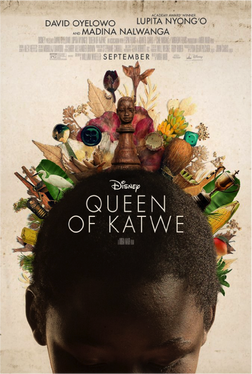 When I’m walking between stations on the Tube, I’m always looking out for movie and film posters showing diverse casts. It’s become something of a reflex, I don’t often realise I’m doing it until an image makes me stop. In a sea of posters featuring predominantly male, white faces, a poster highlighting women or people of colour – or both! – will always catch my eye. That's why I'm already excited about two films coming out in October: Queen of Katwe and A United Kingdom. Both films are directed by women of colour and based on true events. Queen of Katwe, about a Ugandan chess prodigy, is a film I will be writing more about over the next few months. As both a scholar of Uganda and a Ugandan myself, finding compelling, grounded depictions of Africans (particularly African women and girls) in mainstream media is rare and important. While Africa has long been essentialised as a continent of disease and death, my years of studying just one African country has shown me some of the many other stories that can – and should – be told. Stories of courage and ingenuity by ordinary and extraordinary people alike. This is what diversity means to me. It means welcoming new stories, encouraging people on the margins |
A2B FourArchive to Blockbuster allows four academics to pitch ideas for films, based on their original research, to film industry experts and a public audience. A2B films all showcase stories about BAME histories, bringing opportunities to address the concerns of #oscarssowhite, and helping organisations like the British Film Institute, BBC, FilmFour and others who have all set up diversity campaigns. Our ideas will provide roles for BAME actors and professionals both in front and behind the camera. ArchivesCategories |
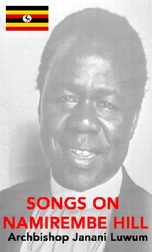


 RSS Feed
RSS Feed
